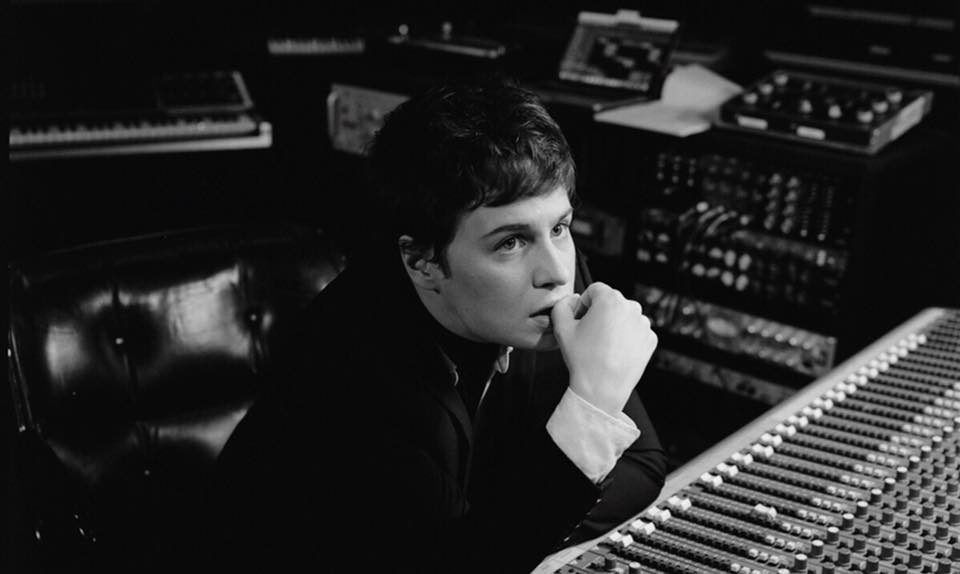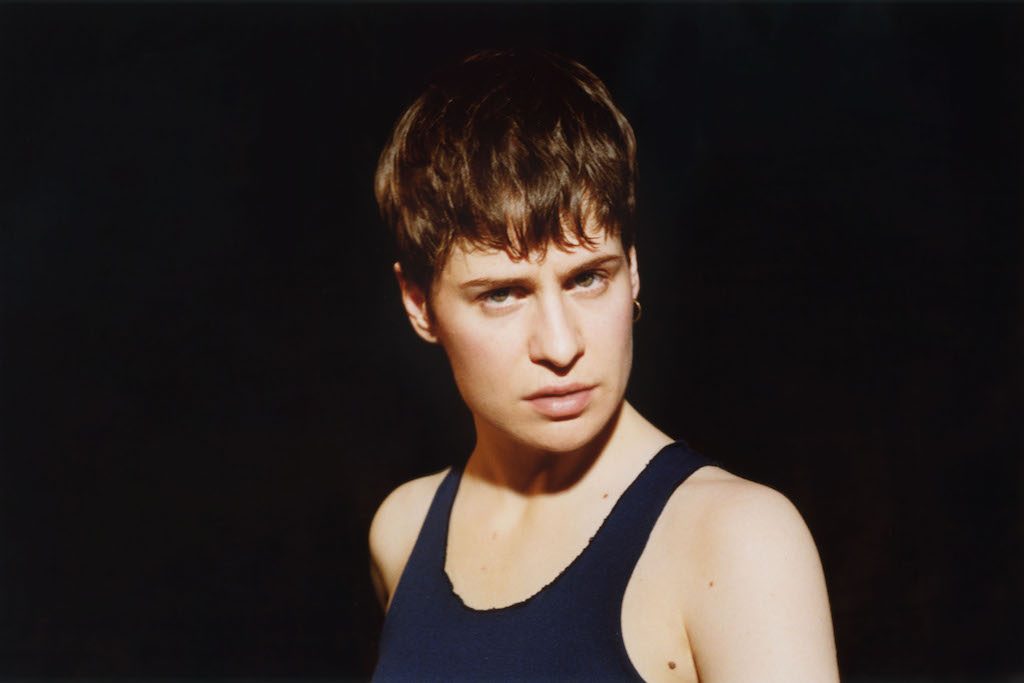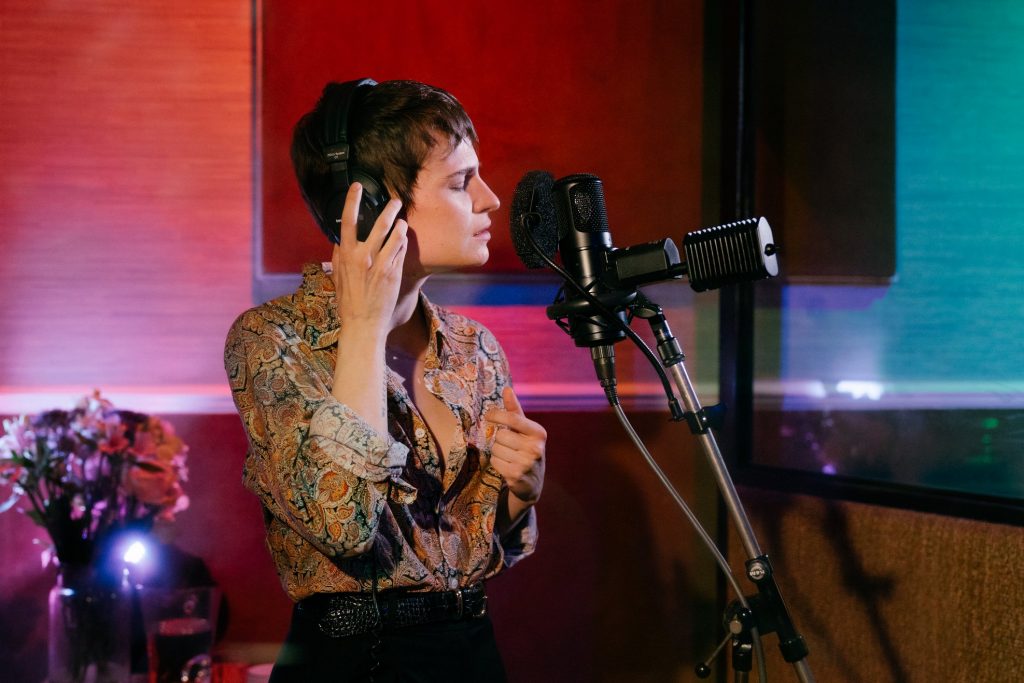“It Makes You Blossom”: How Christine And The Queens Turned Pain Into A Persona
"Creating a stage character that helps you overcome some old pain, or makes you blossom, or makes you feel happy with your own body, your physicality or even your flaws, is something extremely moving."

The opening track of Héloïse Letissier’s second album Chris begins with the sound of shattering glass and an audible gasp.
Many reviews and critics have questioned what it represents; perhaps it’s the end of “Christine” (the French artist’s musical character), the literal breaking of a mould, or perhaps it’s something else entirely. It’s what comes next that’s important.
What follows after this gasp and shatter is a series of tracks discussing sexuality, gender, fetish, and anxiety. While Chaleur Humaine — the debut album from Christine and the Queens — dealt mostly with the latter, Chris focuses more on the former, questioning society’s uneasy relationship with them through the vehicle of its titular character “Chris”.
Existing outside the gender binary, Chris has a lot of feelings about sex and desire, and they share them across 11 tracks with a clear confidence that Letissier would have found impossible to convey as ‘Christine’.
With Letissier’s main inspiration coming from theatre and drag, it’s fitting that the artist describes her new tour as “weird broadway”. Ahead of her first ever visit to Australia, Letissier spoke to Music Junkee about femininity, strength, and the strange path that is evolution.
You had a massive two years touring behind Chaleur Humaine that threw you into the international spotlight. Did you feel pressure to build on that momentum when you returned to the studio to record and produce Chris?
If I’m honest I was really more excited than kind of scared, because I had the fantastic luxury of having a debut album that was pretty well-received and that brought me so many opportunities.
“Let’s get a bit older, let’s get a bit more defiant, and let’s get a bit more sexual.”
As a writer, I was over excited, because I was like, “Good, the first chapter is there and it’s solid and it’s been understood, so from there where do I go?” The excitement of what is to come and what do I want to tell now, and how do I want to express it now, was more important than the pressure of working on another record that could be successful.
Because honestly, I think also what was really helpful is that I made Chaleur Humaine without any pressure to be successful. My French record label were like, “We don’t even know if you have radio singles,” when I finished the album, so then everything that happened was like a surprise. And I think I kind of saw it that way to myself. I didn’t really think of preserving that success. I was thinking “what do I want to tell now?”
I was starting to write new songs at the end of the first tour, and I couldn’t wait to actually go back to the studio because I knew the second chapter would be really interesting, because when you are out of a first album that is so successful you have several different options to do. Mine was like, “Let’s play a bit with the small legacy of the first album, let’s get a bit older, let’s get a bit more defiant, and let’s get a bit more sexual, my way.”

Photo via Facebook
You can definitely hear that in the album. Especially because when promoting Chaleur Humaine you talked a lot about how you struggle with anxiety and you felt that that was really evident on the album. Do you feel that the anxiety is still there on Chris?
Yeah it is, but it’s a different way to address it. I think on Chris there is something new, which is a bit more confidence and a bit more sensuality. The eroticism of the second album is something different from the first one. But in Chris also you have songs like ‘What’s-Her-Face’ that still address that longing anguish.
I still have these wounds but I address them with more defiance. There is a sense also that the second record is more vivid, even though I’m wounded … It’s a bit less nocturnal than the first record. I think the stage character that I have is always created out of wounds, and some of the songs on Chris kind of address those wounds but with more of a wink.
For me the album is a bit warmer and a bit more daring, but it always comes from the same idea of sometimes feeling like an outsider. There is a song called ‘Five Dollars’ where I talk about people that are at the margins, but there is more tenderness than sadness. I just try to address the same pain with different weapons.
I was actually going to ask you about ‘What’s-Her-Face’ which you mentioned earlier, because it’s probably the darkest moment on the album. How did that track come together?
All the tracks that ended up on the album are really precise when I write them, they really come fast, I write them in like half an hour. With that one I was writing intensely and I wrote that track after a day where I was like “I can’t believe I did all that fantastic thing, became a singer, whatever, toured different countries, and I still feel sometimes like I am nothing, when I get the side-eye from someone, for example.”
“I still have these wounds but I address them with more defiance…I just try to address the same pain with different weapons.”
It immediately wakes up the old wounds of me being so lonely in high school, and I was like, “So I can’t really escape the woman I used to be. I can become more powerful but I’ll always be the lonely girl in high school.” It was a really lucid but really sad moment of my day, and I was like, “Okay, I’ll forever be the outsider in a way.” The song was just addressing that. I went home and I just went to write that. When it comes from a really precise emotion I have, the song is always easy to write because I just have to do it, it’s like an itch.
I think it’s important to have that song on the record because the record is of course about someone who is more confident but that confidence comes from a place of pain. I had to embrace who I was because I didn’t really know myself. There is a depth, I thought it was important to address that also in the record.
There is a fantastic record I love that inspired me for Chris also, do you know The Velvet Rope by Janet Jackson?
Yes!
Because that record is so fierce, but some songs are, you know, she feels like shit, or she feels rejected or alone. You get to completely meet someone, with struggle and pain and lust and joys. You get to meet someone properly. I think with Chris I did want people to know me, and if you want to know me you kind of have to listen to that album.

Photo Credit: Suffo Moncloa
So obviously with Chris, it’s a new character, as you said. What is the main difference between Chris and Christine?
I think it’s almost more like a small mutation of the same character. I think the indication of that is the nickname, because Chris comes from Christine, just like the simplest way to address me. It’s my nickname. And it comes with the idea of being a bit older, a bit more confident, evolving towards a femininity that I relate to also, which is a femininity that is kind of ambivalent, slightly aggressive, you know, like the strong woman in the ’90s.
When you listen to Chaleur Humaine you can hear some hints of Chris, and I think Chris is just me evolving. The stage character is also like a drag character in a way. It has to express where you are at. You have to make the character evolve if you evolve yourself. When I started to write the second record I was like, “Well, you know, I was Christine three years ago, but now I feel slightly different. I feel like there is a different nuance to my character.”
I had to make it visible and I think the sense also of confirmation is really appealing to me as an artist. I don’t want to just get frozen at some point, I always want to be evolving. I think it’s quite a cool way to exist.
Speaking of drag, the whole Christine and the Queens project was inspired quite a lot by drag culture in London and Paris. Does drag still have a big impact on you and how you perform and how you create your music?
I think it should be inspiring for everyone actually, drag culture. I think also it’s so powerful and moving even for people who don’t really understand drag culture, because there is a sense of empowerment. I mean, the very idea of creating a stage character that helps you overcome some old pain, or makes you blossom, or makes you feel happy with your own body, your physicality or even your flaws, is something extremely moving.
“Creating a stage character that helps you overcome some old pain, or makes you blossom, or makes you feel happy with your own body, your physicality or even your flaws, is something extremely moving.”
When I met some drag queens in London and they kind of inspired me to create Christine and the Queens, I was a young girl. But as a young woman it was so empowering to feel that it was all a performance, like femininity was a performance, masculinity was also a performance, and you get to play around with those things until you feel like you are comfortable with yourself. I think that theatricality that is really honest and really poetic at the same time kind of made me free also.
Of course Christine is not a drag character because I’m not a drag queen, but it has the same virtues as a drag character. I use my wounds and I use them to create characters and now I’m empowered with that.
The first time I ever heard your music was actually a friend sent me the music video for ‘The Loving Cup’, and that song along with it’s music is so important to me. I think to so many young queer people could relate to it as well, because it really shows and tells a story that so many of us can relate to. Do you feel that as a part of the queer community you have a responsibility to share these stories and this point of view?
Well… I felt inspired to do it. The question of having the responsibility is always a bit frightening. But you kind of, you have to. There is also a sense of representation and of visibility that is important. It kind of also influences my choices every day as a female performer, as a female queer performer. Every time I’m like, “How do I want to exist with my body and my face and my words as a female performer in the space I’m given?”
Of course there’s a sense of responsibility in the sense that I do also want to make art that I was missing when I was younger, if that even makes sense. I was longing for more representation of different ways of existing when I was younger. I was desperately searching for other ways to exist.
I’m always thinking of that also when I’m doing a video, for example. I’m thinking of the young girl I was who would never sing and wasn’t really that classically feminine and I’m like, “Well, let’s give that woman a space to exist.” So I don’t really think it’s a sense of responsibility, but it’s an urgency I have a performer also.

Photo via Facebook
Live performance is such a huge part of what Christine and the Queens is all about. What can the audiences expect from a Christine And The Queens live show?
They can expect dancing for sure. Dancing and sweat and muscles. Songs from the first and the second album intertwined. Also, the feedback I got from the first leg of the tour, people were like, “It’s almost theatrical.”
It’s a gig of course but some people have been telling me it’s like “weird Broadway”. So I was like, “That’s a good way to put it! It’s a weird Broadway gig.” I’ve been working on something that’s kind of theatrical, it’s true. I do have kind of duets. The dancers are not really just dancers, they’re also characters, interacting with me. I did want to bring the album Chris to life with interactions like that.
It’s a story, it’s a loose story you can follow. I think “weird Broadway” is appealing enough and weird enough for people to want to come, people will be like, “What?!”
Christine and the Queens begin their Australian tour in Perth on March 3. For all dates and details, head here.
Patrick Campbell is a freelance writer and DJ based in Sydney and has been looking for a club night with resident owls since watching the video for ‘The Loving Cup’ by Christine And The Queens. Any information on such club nights can be directed to his Twitter.
Photo Credit: Suffo Moncloa/Supplied


